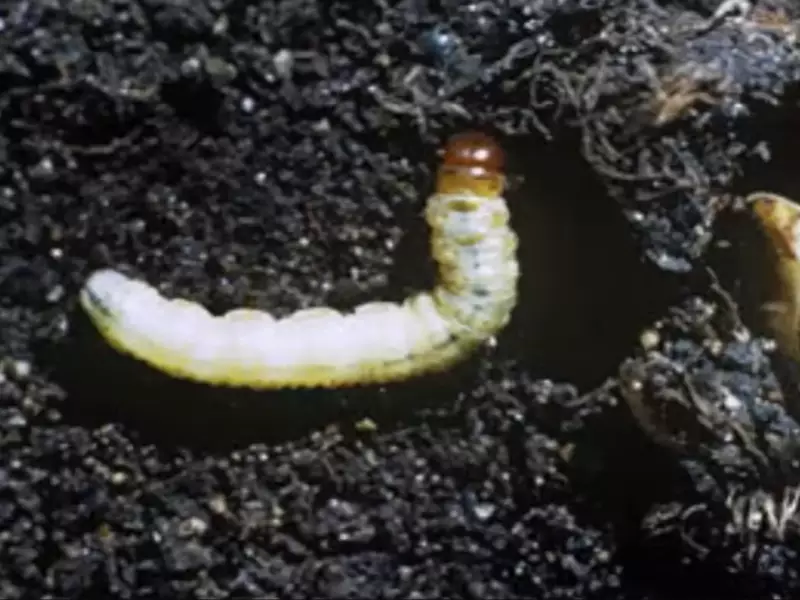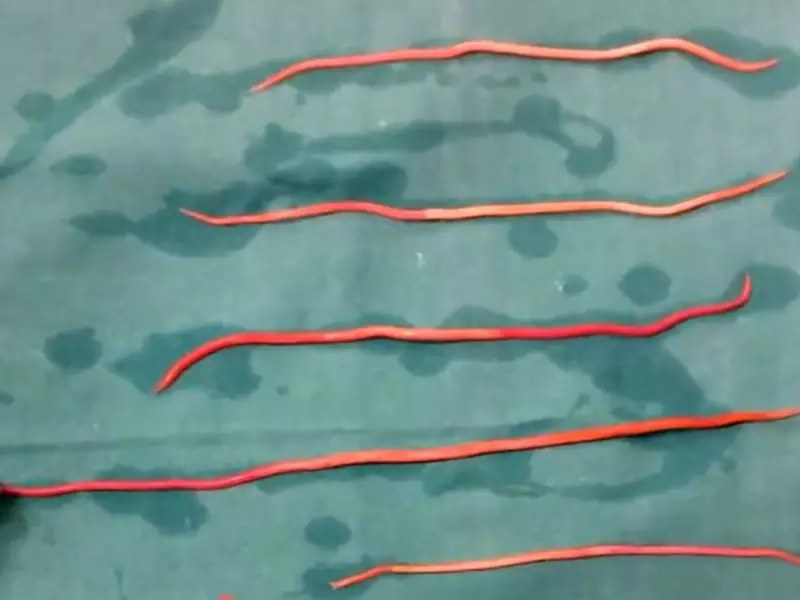Parasitic infections are a global health concern, affecting millions of people every year. Among the various parasites that infect humans, roundworms and hookworms are notably prevalent. These parasites thrive in different environments and have unique life cycles that contribute to their transmission and impact on human health.
The primary difference between roundworms and hookworms lies in their physical traits, habitats within the host, modes of transmission, and the health implications they carry. Roundworms, also known as Ascaris lumbricoides, are large, cylindrical parasites that primarily infect the small intestine. Hookworms, on the other hand, are smaller, with a distinctive hook-like mouthpart, and they infect the host by burrowing into the skin.
Understanding these differences is crucial for effective prevention, diagnosis, and treatment of infections caused by these parasites. Both roundworm and hookworm infections can lead to significant health issues, including malnutrition, anemia, and impaired growth in children. Recognizing the distinct characteristics and health impacts of each worm can guide public health strategies and individual precautions to mitigate their spread and effect.

What are Roundworms?
Definition and General Characteristics
Roundworms, scientifically known as Nematodes, are a type of parasitic worm that can infect both humans and animals. These parasites are characterized by their elongated, cylindrical bodies that taper at both ends, resembling a common earthworm. Roundworms vary in size, but some species can grow quite large, reaching lengths of several inches.
Roundworms are endoparasites, meaning they live inside the host’s body, primarily in the intestines. They have a simple digestive system that runs from their mouth to their anus. Roundworm infections, known as ascariasis in humans, are common in areas with poor sanitation, where humans may come into contact with infected soil or consume contaminated food or water.
Lifecycle and Transmission
The lifecycle of a roundworm involves several stages, from egg to adult. Here’s a simplified overview:
- Egg Release and Contamination: Infected individuals release roundworm eggs into the environment through their feces.
- Egg Maturation: The eggs mature in the soil, becoming infectious after a few weeks.
- Ingestion: Humans ingest the mature eggs through contaminated soil, food, or water.
- Larval Hatch and Growth: Inside the human body, the eggs hatch into larvae, which then migrate through the body, eventually reaching the intestines where they grow into adults.
- Reproduction: Adult worms reproduce in the intestines, continuing the cycle.
Transmission is primarily through ingestion of eggs from contaminated sources, highlighting the importance of sanitation and hygiene in preventing infection.
What are Hookworms?
Definition and General Characteristics
Hookworms are another type of parasitic worm that infect the small intestine of humans and animals. Unlike roundworms, hookworms are smaller and have a distinct hook-like mouthpart they use to attach to the intestinal wall. There are two main species that infect humans: Ancylostoma duodenale and Necator americanus.
Hookworms feed on the host’s blood, leading to anemia and other nutritional deficiencies. Infections are more common in tropical and subtropical regions, closely associated with poor sanitation and the practice of walking barefoot on contaminated soil.
Lifecycle and Transmission
The hookworm lifecycle involves direct skin penetration, unlike roundworms that require ingestion of eggs:
- Larval Development: Hookworm larvae mature in the soil, feeding on organic matter until they become infectious.
- Skin Penetration: When humans come into contact with contaminated soil, the larvae penetrate the skin.
- Migration: Larvae travel through the bloodstream to the lungs, then move to the throat, are swallowed, and finally reach the intestines.
- Adulthood and Reproduction: In the intestines, they attach to the intestinal wall, mature into adults, and reproduce. Eggs are then expelled in feces, and the cycle begins anew.
The key mode of transmission is through skin contact with soil that contains infectious larvae.
Key Differences
Physical Traits
Size and Shape Comparison
Roundworms are generally larger and have a cylindrical, smooth body. They can grow several inches long. Hookworms, in contrast, are smaller and characterized by their curved anterior end, which forms a “hook.”
Unique Features Distinguishing Each Worm
- Roundworms have a straightforward, tubular digestive system visible through their transparent body.
- Hookworms possess cutting plates or teeth in their mouth, used to attach to the host’s intestinal wall.
Habitat and Transmission
Preferred Environments within the Host
- Roundworms prefer the intestinal tract, specifically the small intestine, where they can feed on partially digested food.
- Hookworms also reside in the small intestine but are attached to the mucosa, feeding directly on the host’s blood.
Modes of Transmission to Humans
- Roundworms are transmitted through ingestion of eggs from contaminated soil, food, or water.
- Hookworms infect hosts through skin contact, primarily when bare skin touches soil containing infectious larvae.
Health Impact
Symptoms Caused by Roundworms
Infected individuals may experience abdominal pain, malnutrition, stunted growth in children, and respiratory symptoms as the larvae migrate through the lungs.
Symptoms Caused by Hookworms
Hookworm infections can lead to chronic anemia, protein deficiency, fatigue, and in children, impaired growth and cognitive development.
Long-term Health Effects
Persistent infections with either parasite can lead to severe health issues. Roundworms can cause intestinal blockages, while hookworms can cause severe anemia and developmental problems in children.

Diagnosis and Treatment
Diagnosing Infections
Diagnosing parasitic infections like those caused by roundworms and hookworms is crucial for effective treatment. The most common diagnostic methods include:
- Stool Tests: Examination of stool samples under a microscope to identify eggs or larvae.
- Blood Tests: Checking for signs of anemia or specific antibodies that indicate infection.
- Imaging Tests: In severe cases, X-rays or CT scans may be used to visualize worms in the intestines.
Challenges in Identifying Each Worm
Identifying roundworms and hookworms can be challenging due to:
- The similarity in symptoms to other digestive diseases.
- The variability in the life cycle stages present in samples.
- Intermittent egg release, making some infections easy to miss without multiple tests.
Treatment Options
Medications for Roundworm
For roundworm infections, antiparasitic medications such as:
- Albendazole and Mebendazole are effective in killing adult worms.
- Ivermectin is sometimes used, particularly in cases with skin and eye involvement.
Medications for Hookworm
Hookworm infections are treated with similar medications:
- Albendazole and Mebendazole to eliminate adult worms.
- Iron supplements may be necessary to address anemia caused by blood loss.
Preventive Measures and Vaccines
- Hygiene education to prevent soil-transmitted helminth infections.
- Vaccines are under development but not yet widely available.
Prevention Strategies
Sanitation and Hygiene Practices
Improving sanitation and hygiene is key to preventing these infections:
- Use of toilets to reduce soil contamination.
- Handwashing with soap and water, especially before eating and after using the toilet.
Importance of Clean Water and Food
- Ensuring access to safe drinking water.
- Washing and cooking food thoroughly to kill any potential eggs.
Role of Public Health Education
Public health campaigns play a crucial role in:
- Educating communities about the risks and prevention of parasitic infections.
- Promoting sanitation and hygiene practices.
Global Prevalence
Roundworm Infection Rates Worldwide
Roundworms are among the most common parasitic infections, affecting:
- Over 1.5 billion people globally, especially in tropical and subtropical regions.
- High prevalence in areas with poor sanitation and hygiene practices.
Hookworm Infection Rates Worldwide
Hookworms similarly have a significant global impact, with:
- Estimates of around 740 million people infected worldwide.
- Common in warm, moist climates where sanitation is lacking.
Impact on Public Health Systems
The widespread prevalence of these parasitic infections has significant impacts on public health systems, including:
- Increased healthcare costs for diagnosis and treatment.
- Economic impact due to lost productivity and long-term health issues.
- Strain on resources in endemic regions, necessitating broad public health interventions.
Frequently Asked Questions
What are the main symptoms of roundworm infection?
Roundworm infections often present with digestive issues, including abdominal pain, diarrhea, and in severe cases, weight loss and malnutrition. Infected individuals may also experience coughing and difficulty breathing as the worms migrate through the lungs.
How do hookworms infect humans?
Hookworms primarily infect humans through skin contact with contaminated soil. The larvae penetrate the skin, travel through the bloodstream, and eventually reach the lungs and small intestine, where they mature and live.
Can roundworm and hookworm infections be prevented?
Yes, roundworm and hookworm infections can be prevented through proper sanitation and hygiene practices. This includes using toilets, wearing shoes in endemic areas, and ensuring that food and water are clean and safe to consume.
Are children more susceptible to these infections?
Children are particularly susceptible to roundworm and hookworm infections due to their play habits, which may involve direct contact with contaminated soil. Their developing immune systems also make them more vulnerable to the adverse health effects of these infections.
Conclusion
Recognizing the differences between roundworm and hookworm infections is essential for the global fight against parasitic diseases. Through increased awareness, improved sanitation, and accessible medical care, the burden of these infections can be significantly reduced. It underscores the importance of continued research, public health initiatives, and community education to protect vulnerable populations, especially in regions where these parasites are endemic.
The journey toward eradicating parasitic infections such as those caused by roundworms and hookworms is ongoing. By understanding their distinct characteristics and impacts, individuals and communities can take proactive steps towards prevention and treatment, paving the way for healthier lives free from the constraints of these parasitic diseases.
